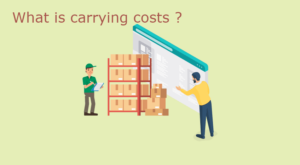Marginal costing means change in total cost due to production of an additional unit of output. And it is a variable cost applied to the unit cost.
Index
1. What is marginal cost?
2. What is marginal costing ?
3. What is the characteristics of marginal costing?
1. What is marginal cost?
marginal costs as understood in economics is the incremental cost of production which arises due to one-unit increase in the production quantity .
Further, as we understood variable costs have direct relationship with volume of output and fixed cost remains constant irrespective of volume of production.
Hence, the marginal costs are measured by the total variable cost attributable to one unit. Thus, marginal cost is precisely sum of prime cost and variable overhead.
For example , the total cost of producing 10 units and 11 units of a product is Rs. 10,000 and Rs. 10,500 respectively. The marginal cost for 11 unit i.e. 1 unit extra from 10 units is Rs. 500.
Example:
Vidhata Ltd. produces 10,000 units of product S by incurring a total cost of Rs. 3,50,000 . Further , Break up of costs are as follows :
i) Direct material @ Rs. 10 per unit , Rs. 1,00,000.
ii) Direct labor cost @ Rs. 8 per unit Rs. 80,000.
iii) Variable overheads Rs. 2 per unit , Rs. 20,000.
iv) And, fixed Overheads Rs. 1,50,000 (upto volume of 50,000 units).
In this example, if Vidhata Ltd wants to know marginal cost of producing one extra unit from the current production i.e. 10,001st unit . On the other hand, the marginal cost would be the change in the total cost due production of this unit 10,001 extra unit . The extra cost would be Rs. 20 as calculated below:
| 10,000 Units (A) | 10,001 Units (B) | Change in cost (B)-(A) | |
| Direct material @ Rs. 10 per unit | 1,00,000 | 1,00,010 | 10 |
| Direct labor cost @ Rs. 8 per unit | 80,000 | 80,008 | 8 |
| Variable overheads Rs. 2 per unit | 20,000 | 20,002 | 2 |
| Fixed Overheads | 1,50,000 | 1,50,000 | 0 |
| Total Cost | 3,50,000 | 3,50,020 | 20 |
2. What is marginal costing?
An alternative to absorption costing is marginal costing/variable costing or direct costing. Besides, under this technique only variable costs are charged as product costs and included in inventory valuation.
Fixed manufacturing costs are not allotted to products but are considered as sand and thus charges directly to the profit and loss account of that year.
Further, marginal costing is a technique of cost and management accounting which is used to analyze relationship between cost, volume and profit. And does not take consideration of fixed cost. Costs are classified on the basis of behavior of cost (i.e. variable and fixed cost).
In addition, it is costing system where products, services or inventories are valued at variable cost only.
Both marginal costing and absorption costing treat non-manufacturing costs (like administration , selling and distribution overheads) as a period cost .
What is Direct costing?
The direct costing and marginal costing is used as synonymously at various places. But the relation of costs with respect to activity level must be understood.
In addition to the above, some cost are variable at batch level but fixed for unit level whereas others are variable at production line level but fixed for batches and units.
3. What is the characteristics of marginal costing?
The technique of marginal costing is based on the distinction between product cost and period costs. Only variable costs are treated as the costs of products while the fixed costs are treated as period costs which will be incurred during the period regardless of the volume of output.
The main characteristics of marginal costing are as follows:
1. All elements of costs are classified into fixed and variable components. Semi variable costs are also analyzed into fixed and variable elements.
2. In fact, the marginal or variable costs (as direct material, labor and variable factory overheads) are treated as cost of product.
3. Under marginal costing, the value of finished goods and work-in-progress is also comprised only of marginal costs. Moreover, the variable selling and distribution are excluded for valuing these inventories. However, fixed costs are not considered for valuation of closing stock of finished goods and closing WIP.
4. Further, fixed cost are treated as period costs and are charged to profit and loss account for the period for which they are incurred.
5. In addition, prices are determined with reference to marginal costs and contribution margin.
6. Lastly, profitability of departments and products is determined with reference to their contribution margin.




[…] You can refer: https://taxandfinanceguide.com/marginal-costing/ […]